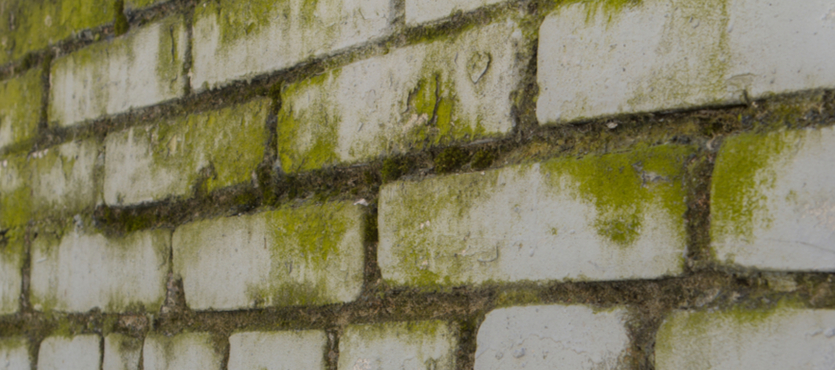Whether your home is constructed with bricks or you have brick accents likes walls, walkways, or stairs, you’ve likely seen mold at one time or another. Black, green, or blue, mold can thrive anywhere moisture remains for any length of time. Mold can form quickly, growing on virtually any brickwork, particularly those areas which don’t get a lot of sunlight and are constantly moist. You can ignore the mold, but it will continue to flourish and spread, negatively affecting the look of your brickwork as well as the strength and longevity. Taking care of mold when it first appears is the easiest approach in successful removing it from your bricks.
Mold is Fungus
Mold is fungus, a living creature, though an unusual one. In fact, individual mold spores are invisible to the human eye and can only be seen with a microscope. When you see mold with the naked eye, you are actually looking at a huge colony of thriving mold spores, which appears black, green, or blue. The color you see is dependent on the age of the colony, as well as its source of nutrition. Mold, like other living creatures needs water, food, and oxygen to flourish. Mold enjoys consuming dead organic materials as food, often surviving on weeds and foliage around brick structures as well as the dust and dirt atop brickwork. Mold thrives in temperatures between 40 degrees and 100 degrees Fahrenheit, but even temperatures below freezing don’t kill mold spores, instead low temperatures force them into hibernation, ready to grow again as soon as temperatures rise.
Ridding Your Bricks of Mold
The bad news is if you don’t clean mold off your bricks it will continue to spread. In fact, mold can spread onto neighboring surfaces or float from surface to surface, spreading even further. The good news is you can remove mold from your bricks and stop the spread.
You’ll need a scrub brush, gloves, your garden hose and water, mold/mildew remover or bleach, and some soft clothes to get the job done. If you use bleach rather than mold/mildew remover, you’ll need to mix equal parts of bleach and water to make your solution. Keep in mind that bleach can discolor some bricks (so test it first in an inconspicuous area) and runoff can kill plants. Protect plants and other areas from chemicals and mold runoff by controlling the drainage as you clean.
To begin the removal process, put on your gloves and other protective gear. Apply your mold/mildew remover or your bleach mixture to the mold infested bricks. Leave it at least three minutes and up to five minutes. With your gloves on, use your scrub brush to remove the mold. Rinse the area completely using your hose/water. Continue repeating the steps until all the mold is removed. NOTE: While you may have been told power/pressure washing is a great way to remove mold, it isn’t a great option for bricks. In fact, power washing can weaken or damage brickwork, so always ask a masonry professional before proceeding with pressure washing your bricks.
Keeping the Mold Away
As mentioned, mold is prone to grow in moist, shady areas around your home. You can stop mold from returning by cleaning areas prone to mold growth monthly with your garden hose and a soft brush. In addition, keeping weeds and foliage off brickwork can help limit growth of mold. If you have difficulty in removing mold from mortar or bricks, you may need to seek the assistance of a masonry professional like those at Turnbull Masonry to help. Call on the professionals at Turnbull Masonry, where you’ll find the expertise needed to keep your brick and masonry work, looking its best and functioning effectively for years to come.

